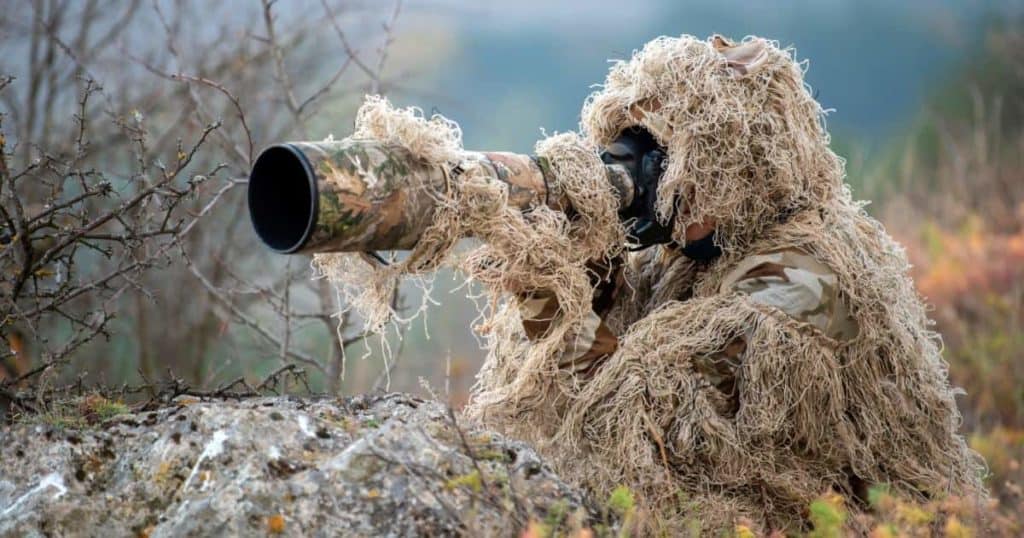Wildlife photography is a beautiful profession for anyone with a passion for wild animals and nature. It provides you the opportunity to capture and showcase the beauty and diversity of the natural world. However, it comes with its own set of challenges and concerns.
One of the most common questions that aspiring wildlife photographers ask is, “How much do wildlife photographers make?” While it is difficult to provide a definitive answer to this question, several factors can determine your income potential.
In this article, we’ll take a closer look at how much wildlife photographers make, the factors that determine their earnings, and tips on how to make money as a wildlife photographer.
How Much Do Wildlife Photographers Make?
The short answer to the question, “how much do wildlife photographers make?” is, it depends. According to ZipRecruiter, the annual salary of wildlife photographers ranges between $29,000 to $48,000, which averages around $41,000.
This salary is almost the same as that of general photographers, which is $41,280 as reported by BLS. The income potential for wildlife photographers can vary greatly depending on factors such as skill level, experience, and location.
If you’re just starting in the field, it's common to make around $20,000 to $30,000 a year. However, as you gain more experience and build your portfolio and reputation, your income can increase significantly.
For example, top wildlife photographers can earn up to $81,000 or even more per year. This is often after selling prints or licensing their images to stock photography agencies or clients.
Factors That Determine How Much Wildlife Photographers Make

Several factors can impact a wildlife photographer's income. Some of the most significant factors include:
Experience
Experience is one of the key factors that determine how much you make as a wildlife photographer. With more experience and skills, you become more in demand and get higher-paying gigs.
Location
The demand for wildlife photography varies by region, and you may have to change locations to get better opportunities. However, the cost of living in major cities can greatly affect how much you profit.
Type of Project
Wildlife photographers who specialize in shooting for top magazines or stock photography agencies may earn more than those who only sell prints or do freelance work. Also, if you’re only working as a freelancer, your income and frequency of work may not be as constant as those working for major wildlife organizations.
Social Media Following
Social media allows photographers to reach a wider audience and promote their work. By leveraging this opportunity and increasing your following, you can gain visibility and attract more clients, which can lead to a higher income.
Also, the more followers you have, the more opportunities you have to monetize your work through sponsored posts, affiliate marketing, and other strategies.
How to Become a Wildlife Photographer
Being a wildlife photographer requires a combination of technical skills and passion. Here are some steps you can take to start your journey:
Learn the Basics
Start by learning the basics of photography, including composition, lighting, and exposure. Online tutorials, classes, or workshops provide great information when it comes to photography generally.
Many universities and photography schools also offer classes that cover the technicalities of photography. By learning the basics, you can develop your photography skills and create better images that capture the natural beauty of wildlife.
Invest in Equipment
Wildlife photography often requires specialized equipment, such as long lenses and sturdy tripods. Investing in quality equipment will help you capture better images and attract more clients.
It is important to research what type of equipment will best suit your needs and budget. Here are some key pieces of equipment to consider.
Camera: A DSLR or mirrorless camera with a high resolution and good low-light performance is essential for capturing sharp and detailed wildlife images.
Lenses: For the best output, you need a long lens such as a 70-200mm or a 300mm lens. These lenses allow you to zoom in and capture close-up shots of animals without disturbing them.
Tripod: Taking wildlife photos requires a sturdy tripod for keeping your camera steady and avoiding camera shakes.
Filters: Neutral density filters can help reduce the amount of light entering the lens, allowing you to use slower shutter speeds and achieve a more natural blur in your images.
Protective gear: Wildlife photography often requires you to be in harsh weather conditions and rugged terrains, so it’s vital to invest in protective gear such as waterproof bags, rugged cases, and weatherproof clothing.
Practice
One of the most important aspects of becoming a successful wildlife photographer is the amount of practice you put in. The more you practice, the better you'll become at capturing the perfect shot.
One way to practice is by taking your camera with you on outdoor excursions, whether that's to a local park or on a nature hike. This will allow you to experiment with different lighting and compositions.
Build a Portfolio
As you gain more status in the industry, build your portfolio to take your career to the next level. A good portfolio serves as a visual representation of your abilities and allows potential clients and agents to see what you can offer.
You can create a physical or online portfolio of the images of animals you've taken. An online portfolio is more accessible and can be shared easily, making it easier for potential clients to view your work. If you don’t know how to build your website, you can use a portfolio-building website like Behance, Squarespace, and Wix.
Network with Other Professionals
Building relationships with other professional photographers can help you get your foot in the door and find paid work.
Joining photography groups, attending photography events, and connecting with other photographers on social media can help you expand your network and gain more exposure.
Learn About the Natural World
The best way to become a wildlife photographer is to spend time in nature. This means hiking, camping, and spending time in wilderness areas.
Spending time in nature helps you understand more about animals and their behavior, habitat, and needs. This knowledge will help you predict animal behavior, find the best location for photography, and capture the perfect shot.
How to Make Money as a Wildlife Photographer

While the income potential for wildlife photographers can vary, there are several ways to make money in this field. Some of the most common include:
Selling Prints: One of the most traditional ways to make money as a wildlife photographer is by selling prints of your work. You can do this through your website, online marketplaces like Etsy or Society6, or at art fairs and festivals.
Stock Photos: You can also license your images to stock photography agencies like Shutterstock or iStock. These agencies pay photographers a percentage of each image sold, making it a passive income stream. However, you need to consistently create high-quality images that are in demand by clients and businesses.
Freelance Work: Another option is to work as a freelance photographer for magazines, newspapers, and other publications shooting feature articles, covers, or photo essays.
Workshops and Tours: Holding workshops and tours can be a great way to teach other people and at the same time make money. You can use this as a medium to make extra money and build your brand and reach more clients.
Final Thoughts
The answer to the question, “how much do wildlife photographers make?”, is not as straightforward as you think. The income potential for wildlife photographers can vary greatly depending on factors like experience, location, and type of work.
To make money as a wildlife photographer, you can sell prints, license images to stock agencies, do freelance work, or monetize your social media following. Becoming a wildlife photographer requires technical skill, passion, and patience. But with hard work and dedication, it can be a rewarding career.
